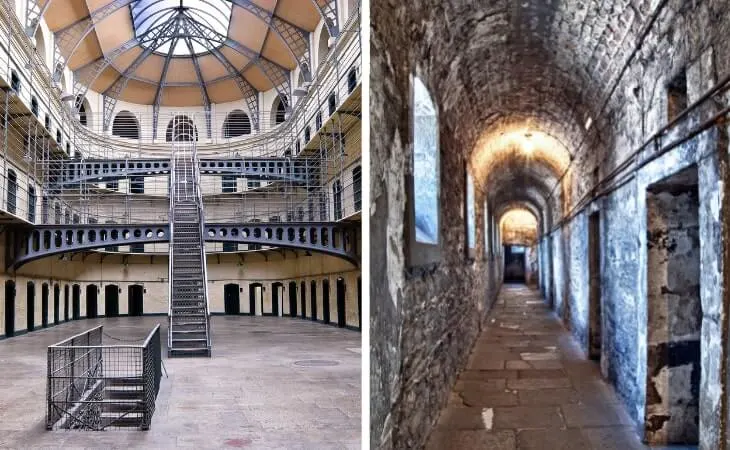A visit to the Botanic Gardens is one of the more popular things to do in Dublin for good reason.
Located a short distance from the city, the National Botanic Gardens are free to enter and they’re a beautiful place for a stroll.
The story of the gardens begins at the end of the 18th century and, nearly 200 years later, they’re still delighting locals and tourists alike.
Below, you’ll find info on everything from the parking at the Botanical Gardens in Dublin (often tricky) to what to see when you arrive.
Some quick need-to-knows about the Botanic Gardens in Dublin

Photo by kstuart (Shutterstock)
Although a visit to the National Botanic Gardens is fairly straightforward, there are a few need-to-knows that’ll make your visit that bit more enjoyable.
1. Location
Only 3km north of the city centre, the Botanic Gardens are easily reachable by car and should take around 20 minutes at the most. If you’re taking public transport then there are plenty of bus routes too. The 4, 9, 83 and 155 are the buses you need that go past the gardens every day.
2. Opening hours
In the summer, the gardens are open on weekdays from 9am until 5pm and on weekends and public holidays from 10am until 6pm. In the winter, the gardens are open on weekdays from 10am until 4:30pm and on weekends and public holidays from 10am until 4:30pm.
3. Parking
There’s parking at the Botanic Gardens (see it on maps here), but it can be a pain to get a space here, unless you visit early/off-peak. The first two hours cost €1 per hour and anything after that is €2 per hour.
4. Free to enter
Unlike many attractions of its kind in other capital cities around the world, there’s no entrance fee at the National Botanic Gardens. If nothing else, it makes for a great option if you’re visiting Dublin on a budget (see out guide to free things to do in Dublin for more).
Things to see and do at the Botanical Gardens
One of the reasons the Botanical Gardens are one of the more popular day trips from Dublin City is due to the volume of things there is to see and do.
Below, you’ll find info on the tour (both guided and self-guided, the portraits, the plants and more. Dive on in.
1. The guided tour

Photo by Nick Woodards (Shutterstock)
If you really want to get to grips with all the strange and wonderful flora passing you by, then definitely try and take one of the free daily guided tours. The experienced guides will help you discover the most rare, iconic, helpful, environmentally vital, and quirkiest plants of the collections.
The guides will also tell you about the fascinating history and international significance of the National Botanic Gardens of Ireland.
There are two tours per day at 11:30am and 3pm and it’s a wise idea to book ahead in advance to make sure of your place. Tickets cost €5. Meet at the sign in front of The Palm House where your guide with a name badge will be waiting.
2. The twelve portraits
If you happen to wander through the Visitor Centre, you’ll suddenly find yourself in the company of the greatest scientists and botanists ever to live!
Beautifully painted by Anna O’Leary, hanging in the Visitor Centre, are twelve portraits of various influential Irish and international figures who are associated with the development of botany.
Representing Irish botany are the likes of Robert Loyd Praeger, William Henry Harvey and Sir Frederick Moore (who, incidentally, was born in Glasnevin). From further afield are Sweden’s Carl Linnaeus, Austria’s Gregor Mendel and the familiar bald head and white beard of England’s Charles Darwin.
3. The audio tour
If you’d prefer to take yourself around the gardens, then one of their three audio guides is a great accompaniment. Simply download the official National Botanic Gardens Glasnevin mobile tours from the Guidigo App for free and choose whether you’d prefer the yellow, red or green tour.
The yellow tour explores Glasnevin’s history, the red tour takes you to the river and back, while the green tour is a deep dive into the glasshouses and all the stunning plants inside.
4. The gardens

Photo by Nick Woodards (Shutterstock)
There are a fair few features in the gardens that mark them out as slightly different from any other gardens you might find in Dublin!
Check out the sundials for a start. Though they may seem archaic, when was the last time you saw one? There’s a regular sundial in front of the Palm House and a more modern, military-style one in the Rose Garden.
Despite its name, The Bandstand isn’t really big enough for a band to play in! It was built in 1894 at a time when there were very few seats in the gardens so it’s really more of an elaborate shelter.
5. The plants

Photos via the National Botanic Gardens of Ireland on Facebook
With over 15,000 plant species within the Botanical Gardens, don’t worry if you aren’t able to get to all of them!
Ireland’s windswept climate produces some very interesting varieties of flora that are on display here (including samples from The Burren in north County Clare).
Though a more recent addition is the Sensory Garden. Opened by Bertie Ahern in 2003, the gardens are an oasis of tranquility and visitors are encouraged to experience its plants with touch, sound, taste, and smell, as well as by sight.
Also, check out The Rockery. This colourful and chaotic part of the gardens has been a unique part of the grounds since the late 1880s.
6. The tearoom
Offering a panoramic view of the gardens, the Garden Tearoom is an essential part of the experience for those moments when you need a refreshment (or caffeine!) to keep you going.
Choose from a delicious selection of hot and cold drinks, snacks and cakes, as well as full hot lunches. The Tearoom is located in the same building as the Visitor Centre so it’s nice and easy to find.
The history of the Botanical Gardens in Dublin

Photo left: kstuart. Photo right: Nick Woodards (Shutterstock)
The story of the gardens begins over 200 years ago at the end of the 18th century. Granted funds by the Irish Parliament, the Dublin Society was able to establish a public botanic garden and in 1795 the gardens were founded on lands in Glasnevin.
This was many years before the concept of tourist attractions (and guided tour apps!) and the original purpose of the Gardens was to promote a scientific approach to the study of agriculture.
The agricultural experiments were interesting but, as was often the way with the curious Victorians, by the 1830s the agricultural purpose of the Gardens had been overtaken by the pursuit of botanical knowledge.
By 1838, the basic shape of the Gardens had been established and in 1862 the first Palm House was built, though unfortunately, it was an unstable, wooden structure that was blown down by strong gales in 1883. It was replaced by the (much sturdier) structure we see today that same year and much later in 1965 the Fern House was completed.
Over the last 25 years, a dramatic restoration and renewal has taken place, with the refurbishment of the glasshouses, the addition of a modern Visitor Centre and an expansion of collections and displays.
Things to do near the Botanic Gardens
One of the beauties of the Botanic Gardens in Dublin is that it’s a short spin away from a clatter of other attractions, both man-made and natural.
Below, you’ll find a handful of things to see and do a stone’s throw from the gardens (plus places to eat and where to grab a post-adventure pint!).
1. Glasnevin Cemetery (5-minute drive)

Photos via Shutterstock
Stretching across 124 acres, Glasnevin Cemetery is the final resting place for some of the most prominent names in Irish history. Take one of their cracking tours and hear the stories and see the graves of the likes of Michael Collins, Éamon de Valera and Brendan Behan. The O’Connell Tower offers a viewpoint to rival that of the Croke’s Skyline (though there’s a 198-step climb to see it!).
2. Phoenix Park (15-minute drive)

Photos via Shutterstock
Home to a zoo, a fort and even the US Ambassador’s residence, Phoenix Park is one of the largest parks in any European capital. If you want to get some air after your trip to the gardens, this enormous space is just a short drive away (Check out the unique Hole in the Wall pub afterwards, too).
3. Kilmainham Gaol (20-minute drive)

Photos via Shutterstock
Infamous for being the site of incarceration for many Nationalist leaders, Kilmainham Gaol has played a hugely significant and symbolic part in Irish history and the prison is well worth a visit. Lying just south of Phoenix Park, former inmates include Charles Stewart Parnell, Patrick Pearse and Eamon de Valera.
4. Food, pubs and Dublin City attractions (20-minute drive)

Photo left by Lukas Fendek (Shutterstock). Photo right via Dublinia on Facebook
Once you’ve had your relaxing stroll through the gardens, you can reflect on it all over a pint and some food back in the city which is only a 20-minute drive away. See our guide to the best pubs in Dublin and the best restaurants in Dublin for more.
FAQs about the National Botanic Gardens
We’ve had a lot of questions over the years asking about everything from ‘Are there toilets in the Botanic Gardens in Dublin?’ (there are) to ‘Are dogs allowed?’ (they aren’t).
In the section below, we’ve popped in the most FAQs that we’ve received. If you have a question that we haven’t tackled, ask away in the comments section below.
How long does it take to walk around Botanic Gardens?
We’d recommend that you allow around an hour to walk around the Botanic Gardens in Dublin. This is a leisurely stroll with plenty to see.
Are the Botanic Gardens in Dublin free?
Yes – there’s no entry fee to the National Botanic Gardens in Dublin. You simply saunter in and soak up the sights and sounds.
